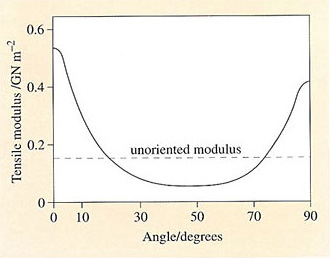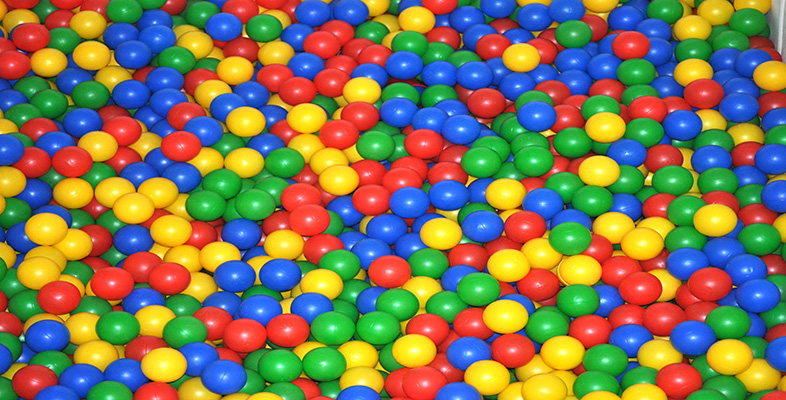5.5.2 Molecular orientation
As polymers are processed and shaped by flowing into moulds the shear stress fields induce preferred orientations in the molecules. The hydrostatic components of the stress field cause packing. These orientation and packing effects will relax with time if the temperatures are high enough, but the moulding cycle is frequently such that they are ‘frozen-in’ by cooling or perhaps fixed into the structure because the material has been crosslinked. The consequent moulded-in or residual stresses and strains may
-
subsequently warp the moulding and
-
can increase the likelihood of fracture or cracking, particularly in the presence of some hostile chemicals.
Molecular orientation due to moulding sometimes results in physical properties which vary significantly with direction, i.e. the properties are anisotropic. This can be beneficial and is therefore sometimes induced deliberately. For example, when synthetic fibres are spun they are oriented uniaxially to increase the strength in the fibre direction. In this way, the high potential strength and stiffness of carbon-carbon bonds in the backbone chain of linear high polymers can be achieved if the chains can be fully aligned along the fibre axis. This has been achieved in aramid fibres and other aliphatic fibres also show significant improvements although nowhere near as great as with aramid fibres like Kevlar . Its tensile modulus of 60-124 GN m−2 may be compared with that for carbon fibre of 200-500 GN m−2, glass fibre (about 70-80 GN m−2) and PET fibre (5500 MN m−2). However, when sheet polymer is oriented by cold drawing (the plateau of HIPS in Figure 44), enhancement of stiffness in and orthogonal to the drawing direction is compensated by a reduction of stiffness from an angle of about 20° to 70° to the draw direction (Figure 53). The dotted line in the figure denotes the unoriented value of the tensile modulus. Another kind of orientation effect results from high strains in crystallising rubbers (Figure 44). In this case, orientation gives rise to crystallisation with a consequent rise in tensile strength over and above that for non-crystallising rubbers like SBR. Unlike cold drawing, the effect is reversible except for low temperatures (below 0 °C) when crystallisation occurs at zero strain and so called stark rubber is formed.

